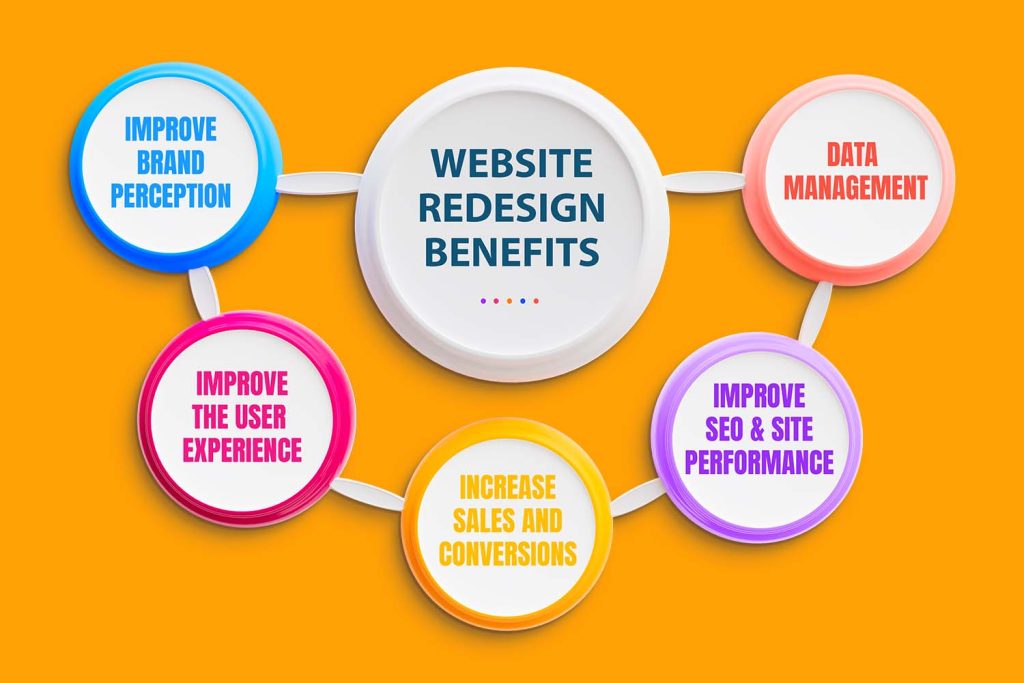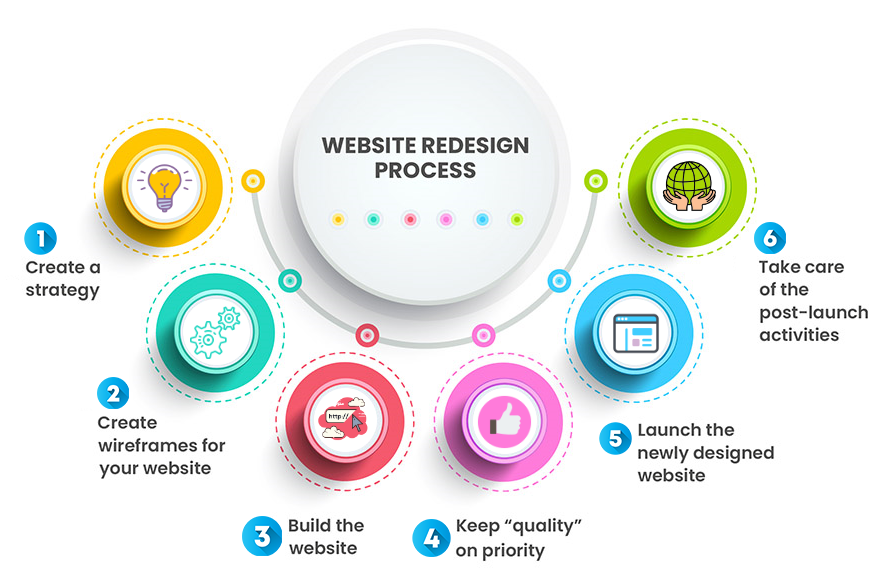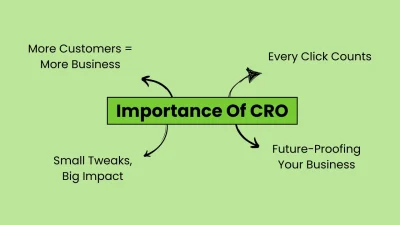In today’s digital-first world, your website is often the first impression your brand makes. But as technology, user expectations, and business goals evolve, so must your website. A well-executed redesign can dramatically improve user experience, search visibility, and conversion rates — ultimately driving business growth.
In this blog, we’ll explore several case studies that demonstrate the before-and-after impact of website redesign, highlighting the strategies used and the measurable results achieved.
Case Study 1: E-commerce Store Boosts Sales by 60%
Before Redesign
- Outdated design with poor mobile responsiveness
- Slow loading times
- Confusing navigation
- Low conversion rate (1.2%)
Redesign Strategy
- Implemented a mobile-first responsive design
- Simplified navigation and added product filters
- Integrated faster hosting and caching
- Added trust signals (reviews, secure checkout badges)
- Introduced urgency elements (limited-time offers)
After Redesign
- Conversion rate increased to 2.8%
- Average order value rose by 15%
- Bounce rate dropped by 25%
- Monthly revenue increased by 60%
Key Takeaway
A clean, fast, and user-friendly design can directly impact sales and customer satisfaction.
Case Study 2: SaaS Company Improves Lead Generation by 3X
Before Redesign
- Generic homepage with no clear value proposition
- Weak CTAs buried in content
- No lead capture forms above the fold
- Poor SEO structure
Redesign Strategy
- Created a compelling hero section with a clear value proposition
- Added lead magnets (free trial, downloadable guides)
- Optimized CTAs and placed them strategically
- Improved site architecture for SEO
- Added chatbot for real-time engagement
After Redesign
- Lead generation tripled within 3 months
- Organic traffic increased by 40%
- Time on site improved by 60%
- Bounce rate reduced by 30%
Key Takeaway
Strategic placement of CTAs and lead capture tools can turn your website into a lead magnet.

Case Study 3: Nonprofit Organization Enhances Donor Engagement
Before Redesign
- Cluttered layout with inconsistent branding
- Donation process was lengthy and confusing
- No storytelling elements to connect emotionally
- Poor accessibility for older users
Redesign Strategy
- Streamlined design with consistent branding
- Simplified donation flow (3-click process)
- Added emotional storytelling through video and testimonials
- Improved accessibility (font size, contrast, keyboard navigation)
After Redesign
- Donations increased by 45%
- Engagement time doubled
- Accessibility score improved from 60 to 95
- Positive feedback from older donors
Key Takeaway
Designing with empathy and clarity can significantly improve engagement and conversions.
Case Study 4: Local Restaurant Increases Reservations by 40%
Before Redesign
- No online reservation system
- Menu was a downloadable PDF
- Poor mobile experience
- No integration with Google Maps or reviews
Redesign Strategy
- Integrated online booking system
- Created interactive menu with filters
- Optimized for mobile and local SEO
- Embedded Google Maps and review widgets
After Redesign
- Online reservations increased by 40%
- Mobile traffic grew by 70%
- Menu views increased by 3X
- Positive reviews increased due to better UX
Key Takeaway
Convenience and mobile optimization are key for local businesses.

Case Study 5: B2B Agency Improves Client Acquisition
Before Redesign
- Website lacked case studies and proof of expertise
- Navigation was confusing for enterprise users
- No clear funnel for consultation booking
Redesign Strategy
- Added detailed case studies with metrics
- Created industry-specific landing pages
- Streamlined navigation for decision-makers
- Added calendar integration for booking consultations
After Redesign
- Consultation bookings increased by 80%
- Time on site increased by 50%
- Bounce rate dropped by 35%
- Client acquisition improved by 2X
Key Takeaway
Tailoring content and UX for your target audience can dramatically improve conversion.
Common Redesign Mistakes to Avoid
- Ignoring SEO: Redesigns often break existing SEO structure. Always audit and preserve SEO elements.
- Overcomplicating UX: Fancy animations and complex layouts can hurt usability.
- Neglecting Mobile Users: Mobile-first design is no longer optional.
- No Clear Goals: Redesigns should be driven by business objectives, not just aesthetics.
- Skipping Analytics Setup: Without tracking, you can’t measure impact.
How to Plan a Successful Website Redesign

1. Audit Your Current Site
- Analyze traffic, bounce rate, conversion paths
- Identify pain points and user feedback
2. Define Clear Goals
- Increase leads? Improve SEO? Enhance branding?
- Align design decisions with these goals
3. Research Your Audience
- Use personas and journey mapping
- Understand device usage and behavior
4. Collaborate Across Teams
- Involve marketing, design, development, and sales
- Ensure alignment on messaging and functionality
5. Test and Iterate
- Use A/B testing for layouts and CTAs
- Gather feedback post-launch and refine
Tools to Measure Redesign Impact
- Google Analytics: Traffic, bounce rate, conversions
- Hotjar / Crazy Egg: Heatmaps and user behavior
- Google Search Console: SEO performance
- CRM Tools: Lead tracking and attribution
- Surveys: Direct user feedback
Conclusion: Redesign with Purpose
A website redesign isn’t just about looking modern — it’s about aligning your digital presence with your business goals. As these case studies show, thoughtful redesigns can lead to measurable improvements in sales, leads, engagement, and user satisfaction.
Whether you’re a startup, nonprofit, or enterprise, investing in a strategic redesign can be one of the most impactful decisions you make.





